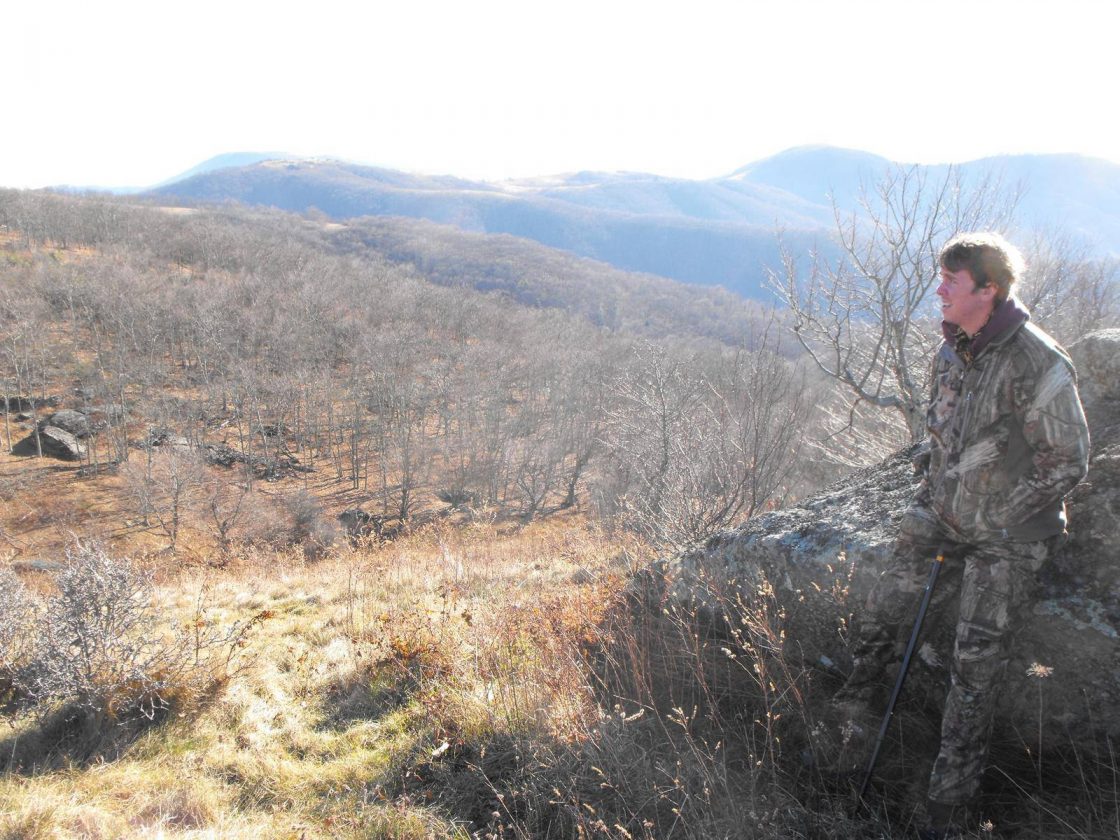The last person to touch this stone tool, thousands of years before I found it, on a gravel bar at the headwaters of a Grayson County creek, was a hunter and a warrior. We can speculate until the cows come home exactly why is was here, in this place, but my feeling is that based on the number and types of other artifacts I’ve found in close proximity to this spot, this was a butchering area, and it was used continuously for many, many years as a site where annual hunts took place.
 When we find an artifact like this there is a momentary ‘rush’ of excitement—a ‘gasp moment’ I call it, and my only explanation for that is spiritual; when my hand first touches it for that one brief instant I am connected to the person that touched it last. That may sound silly to some folks but I’ve never been one to spend a lot of care on what others think, and when I consider the ancient people of our Appalachian Mountains, I probably view them a bit differently than most people do.
When we find an artifact like this there is a momentary ‘rush’ of excitement—a ‘gasp moment’ I call it, and my only explanation for that is spiritual; when my hand first touches it for that one brief instant I am connected to the person that touched it last. That may sound silly to some folks but I’ve never been one to spend a lot of care on what others think, and when I consider the ancient people of our Appalachian Mountains, I probably view them a bit differently than most people do.
It is very easy to be romantic and wistful when we talk about Indians (and yes, that term is okay to use, don’t get excited) and to forget that first and foremost, they were human people, just as we today are human people. The folks I know that have proven native ancestry are universally irked by the ‘noble savage’ concept as a bigoted and disrespectful term that robs them of their humanity. Ancient North American people did not make a conscious effort not to evolve; they did not know what fair chase or sportsmanship meant and the energy they spent hunting was to produce food. They lived in a place until they fouled it then they moved on; if they could run a herd of buffalo off a cliff and kill them all, they did it; if they thought a neighboring tribe had better resources they went to war and they took those resources for themselves; and when modern firearms found their way into their hands, they chucked the sticks and rocks and got on with the program. They loved their children and fought their enemies and demonstrated all of the human emotions that today we take for granted as ‘civilized’. Considering the length of time they survived in these mountains, and what it took for them to face each day in that ancient setting, my admiration for them is incalculable. The mountains treated them all the same.
 My youngest son’s best friend, a kid like another son to me, became a modern warrior a few years ago. He earned his Green Beret and in 2012 in Afghanistan he was grievously wounded, losing his right arm and right leg, while on a mission with his team. Four months after that terrible day he was with me on this same mountain, on this same prehistoric site, a place we had hunted together many times during his childhood, and I watched him fall and get back up, again and again, as he worked to bring himself back, to prove to himself that his spirit had not been defeated. I think it was that grand indifference that the mountain showed him that spurred him on to succeed, that and the patient teaching the mountain provided that prehistoric or modern man, the love of life and will to live can only be found within our own heart.
My youngest son’s best friend, a kid like another son to me, became a modern warrior a few years ago. He earned his Green Beret and in 2012 in Afghanistan he was grievously wounded, losing his right arm and right leg, while on a mission with his team. Four months after that terrible day he was with me on this same mountain, on this same prehistoric site, a place we had hunted together many times during his childhood, and I watched him fall and get back up, again and again, as he worked to bring himself back, to prove to himself that his spirit had not been defeated. I think it was that grand indifference that the mountain showed him that spurred him on to succeed, that and the patient teaching the mountain provided that prehistoric or modern man, the love of life and will to live can only be found within our own heart.
Today he carries in his pocket a simple stone tool from that creek bed, a reminder that he is connected to this place and those people of long ago. It is a token to prove that he is not alone in his life struggle, that he shares a bond with his kind, and that the mountain is patiently waiting.
I think that is a pretty good lesson for us all.

